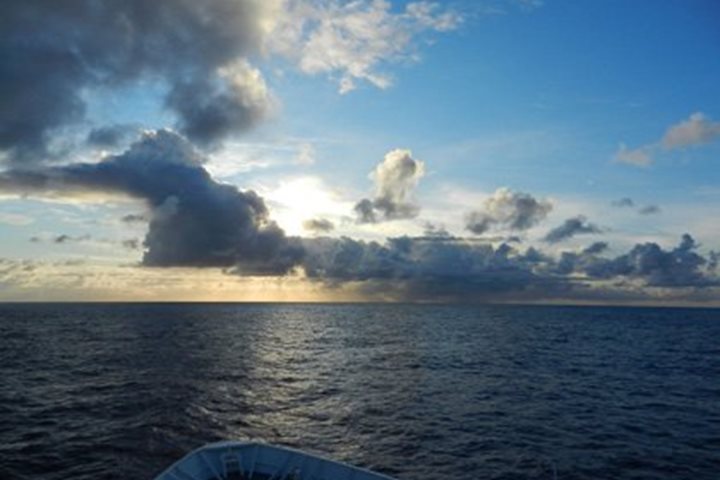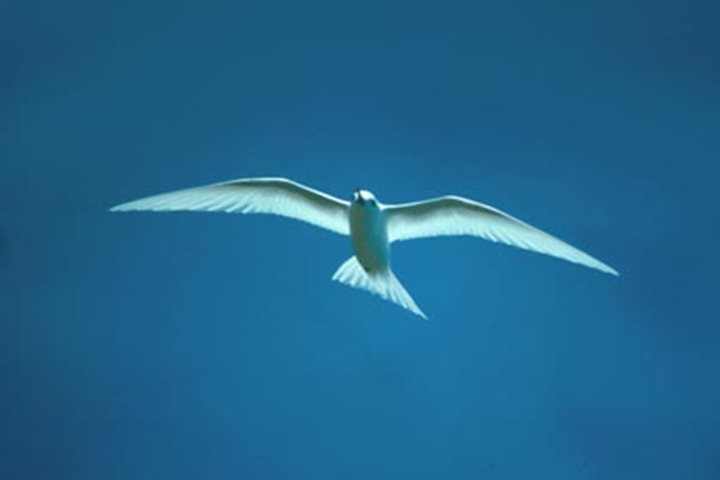We continue on our way from Pitcairn to Easter Island. It is a long way, through some deep seas with an average depth of nearly 10,000 feet. The water is deep azure blue, similar to the crayon situated all the way at the end in the line of blues. This color of blue tells us how incredibly clear the water is, thus meaning there is very little here in the way of planktonic life. There is no land anywhere nearby. We have left the closest place, Ducie Island, and are headed towards the next one, Easter Island. This is a harsh environment for life, being so far from land in a deep sea with poor nutrients. However, there are signs of life, not only of birds and fish, but of the human migrations that have happened here.
A few sea birds were spotted today with some probably coming from behind us while others are more tied to where we are going. Red-tailed tropicbirds probably nested on Ducie Island and are out foraging around us. Also seen were a few petrels, probably Henderson and Herald, which have also come from the islands behind us in the Pitcairn group. Perhaps a bit more exciting was something from up ahead, the Juan Fernandez Petrels. And these are from quite far ahead. Probably nesting on one island on the coast of Chile, these birds have come a long way. Traveling huge distances is what you have to do in this area where food and land is so few and far between.
We also thought about the human migration in this area. We are still thinking and talking about our exciting time on Pitcairn. The incredible story of the mutiny on the Bounty, and the twists and turns that have followed are still swimming in our heads. We are also looking ahead to Easter Island and the incredible story there. How did they get there, how was life there, and what happened to that civilization? So many questions begin to form. As we travel in the comfort of the National Geographic Orion, we think about the ancient Polynesians making their way across this expanse of nearly empty ocean. How did they find their way and make it with such limited resources to such tiny specks of land?
These are more questions that we will try to answer in our days ahead as we arrive to and explore Easter Island.







